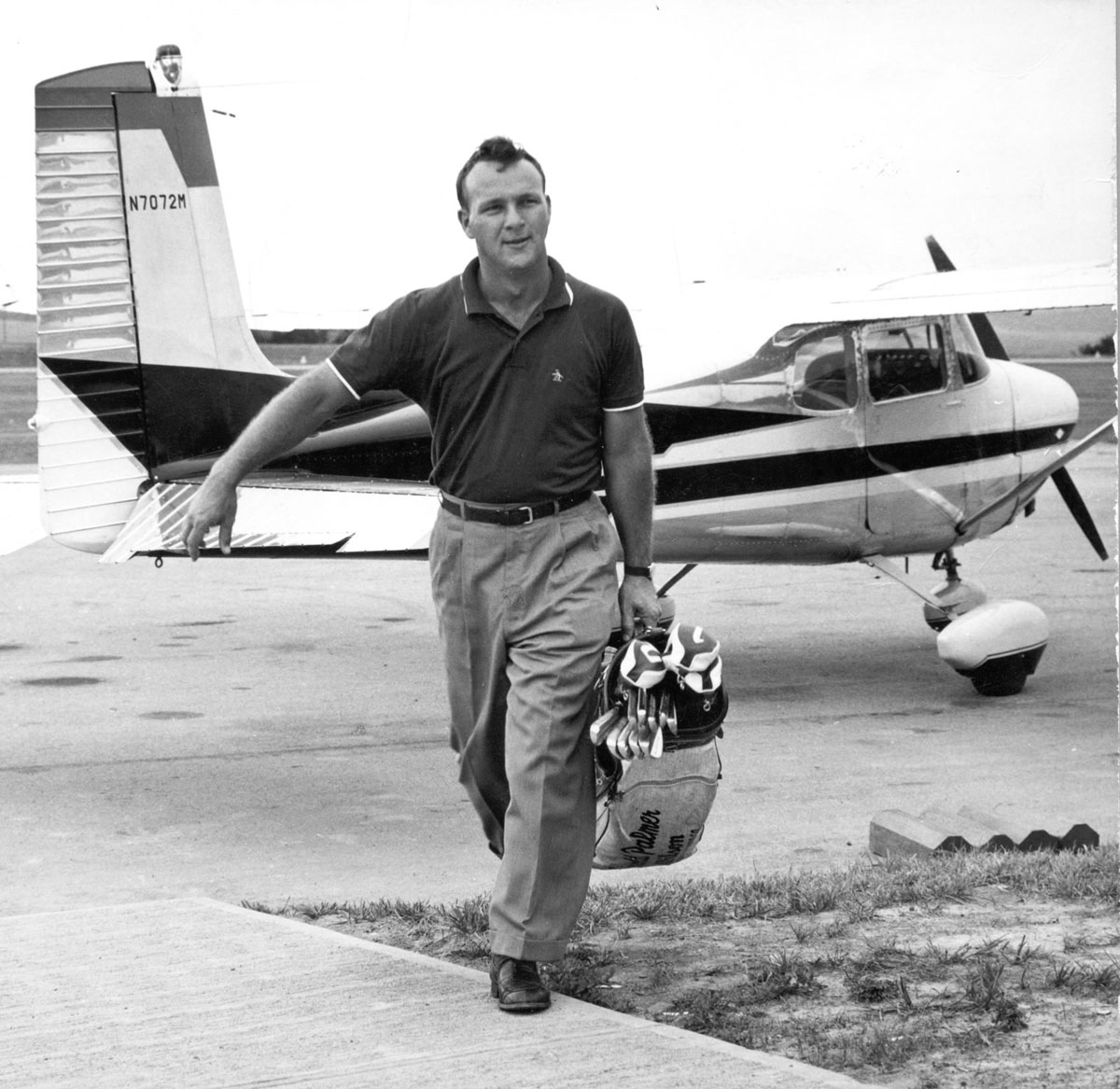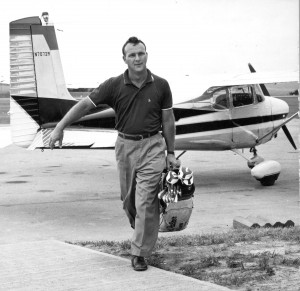In his early golf days, when returning from a tournament, Arnold Palmer often viewed flying as a welcome distraction. That was especially true if the day’s results weren’t exactly what he had hoped.
“If I had a bad tournament, concentrating on flying would take my mind off it,” he said. “That was always a nice relief.”
These days, Palmer says the enjoyment is still as rich, but flying a jet presents different challenges.
“You have to be very alert to fly a jet aircraft,” he said. “If you fly a conventional aircraft and then go to a jet, you have to speed up your thinking process because things happen a lot faster.”
Some pilots who have gone from flying turboprops to flying jets like the Citation X have lamented the fact that their days of “pleasure flying” are gone. Palmer takes a different attitude.
“My pleasure ‘is’ flying my jet,” he says.
Palmer grew up in a small house near the then sixth hole of Latrobe Country Club. When he was a young boy, his father worked at the club as a golf professional and course superintendent. Arnold would often sit for hours watching golfers tee off. He began caddying at the club at 11 and worked at almost every job there in later years.
He concentrated on golf in high school and won his first of five West Penn Amateur Championships when he was 17. He competed successfully in national junior events and at Wake Forest College became the number one man on the golf team and one of the leading collegiate players of that time.
When Bud Worsham, a close friend and golf teammate, died in an automobile accident, a troubled Palmer withdrew from college during his senior year. He began a three-year stint in the U.S. Coast Guard. His interest in golf was rekindled while he was stationed in Cleveland. After his discharge from the service, he returned to Wake Forest to finish his education, but left before graduation and began working in sales in Cleveland.
In the late summer of 1954, he won the coveted U.S. Amateur Championship in Detroit, following a second straight victory in the Ohio Amateur earlier in the season. When he was 20, while traveling on a DC-3 to an amateur golf tournament, the plane flew through a thunderstorm.
“There was a ball of fire rolling up and down the aisle,” he said. “I had no idea what it was. I thought it was all over.”
He would find out that it was an electrical phenomenon known as St. Elmo’s Fire.
“It was just static electricity,” he explained. “It released, and of course, nothing serious happened.”
That incident prompted Palmer—once again—to want to learn more about aviation. When he was about 9 years old, a slightly older friend was interested in aviation.
“We collaborated in building model airplanes,” he said.
In the late 1930s, another friend introduced him to acrobatics.
“He was a glider pilot,” he explained. “He came home on leave, before he went to war, and rented a Super Cub. He took me for a ride and scared the hell out of me. He was doing acrobatics and low-altitude stuff. In those days, rules weren’t as they are today. You could just do about anything you wanted; there really was no one to stop you. Of course, that created an additional interest. I really wanted to know more about what was going on when I was in an airplane.”
He vowed to learn to fly when he could afford it. When he finished the year on tour, in 1955, he began taking flying lessons. He soloed in 1956 and got his private pilot’s license that same year. He learned to fly with Babe Krinock, at Latrobe Airport (Westmorland County Airport), which is now Arnold Palmer Regional Airport (LBE).
“I started getting into flying big time,” he said.
In his early flying days, Palmer trained in Cessna 172s, 175s and 180s, and began chartering aircraft.
“I chartered a lot of 172s,” he said. “If it were a long trip, I would use a twin-engine like an Aero Commander.”
He bought his first plane, an Aero Commander 500, in 1961.
“I liked the thought of having a twin-engine, and it was the best buy around,” he said about that decision. “It was a repossessed airplane. It worked very well for me. I flew everywhere.”
In 1963, Palmer traded up to a Commander 560F. He acquired his first jet, a Rockwell Jet Commander, in February 1966, becoming the first athlete to own his own jet.












